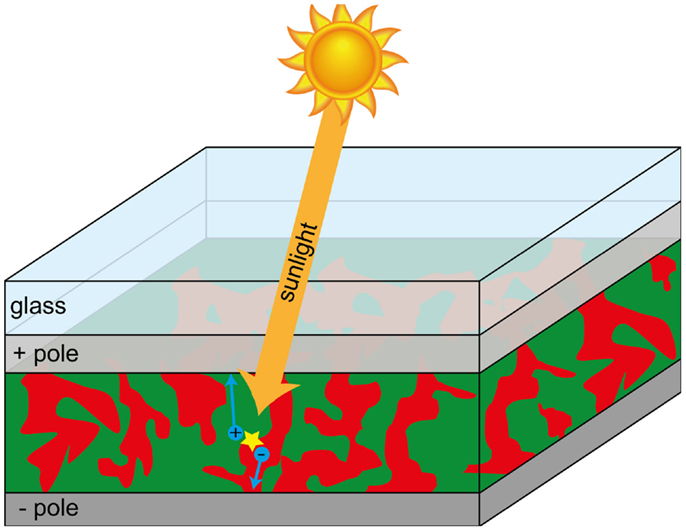Plastic Solar Cells
Plastic solar cells consist of a plastic layer on glass or a flexible foil. In the lab, we use glass plates with a transparent electric contact [the positive (+) pole]. On top of this contact, we put the ink for the active layer, which is the part of the solar cell that converts sunlight to electricity. This ink contains two polymers, a long green one and a shorter redone. The polymers form a mixture. On top of that layer, we put a metal layer, which functions as the negative (−) pole. We then turn the whole stack of layers upside down such that sunlight can shine through the glass into the active layer.

There is a lot of interface, or area of contact, between the two polymers. This is necessary because sunlight creates electrical charges only at the areas where the two polymers are in contact. When the light is absorbed (the yellow star), positive (+) and negative (−) electrical charges are generated. Normally, the + and − attract each other and the energy is lost. In plastic solar cells, the red and green polymers make sure the charges can be separated. The positive and negative charges then move to the + and − poles. Now, light is converted to moving charges, which is electricity.
To know more: https://t.co/NFihjl79ul
Comments
Post a Comment